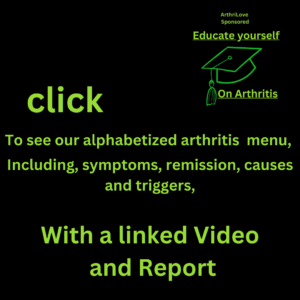
Polymyalgia Rheumatica (PMR): Number 12 on the list of 100 types of Arthritis
Navigating Life with Polymyalgia Rheumatica (PMR): Overcoming Challenges with Resilience and Optimism
Imagine waking up one morning, feeling stiff and achy all over, struggling to get out of bed and perform simple daily tasks like brushing your hair or tying your shoes. This could be a glimpse into the world of someone living with Polymyalgia Rheumatica (PMR), a chronic inflammatory condition that primarily affects older adults. While PMR presents unique challenges, many individuals find ways to maintain a fulfilling life with a proactive approach to management.
 Description of Polymyalgia Rheumatica (PMR)
Description of Polymyalgia Rheumatica (PMR)
Polymyalgia Rheumatica is a disorder characterized by muscle pain and stiffness, primarily affecting the shoulders, neck, and hips. It is considered an inflammatory condition, although its exact cause is not fully understood. PMR is closely related to giant cell arteritis (GCA), another inflammatory disease that affects blood vessels.
Causes and Triggers
The underlying cause of Polymyalgia Rheumatica is not known, but it is believed to involve an abnormal immune response leading to inflammation of the synovial tissue around the joints and muscles. Certain genetic and environmental factors may contribute to the development of PMR, although specific triggers are not well-defined.
Symptoms and Impact on Quality of Life
Symptoms of PMR typically include muscle pain, stiffness (especially in the morning), fatigue, and difficulty with mobility. Limited range of motion in the affected joints can significantly impact daily activities and quality of life, making tasks like climbing stairs or lifting objects challenging.
Age of Onset and Impact on Lifespan
Polymyalgia Rheumatica primarily affects adults over the age of 50, with the highest incidence occurring in individuals aged 70 and older. While PMR itself does not typically shorten lifespan, complications such as cardiovascular disease or side effects from long-term steroid use (commonly prescribed for PMR treatment) can impact overall health and longevity.
Achieving a Higher Quality of Life
A proactive approach to managing PMR can significantly improve quality of life. Strategies include:
- Regular Exercise: Gentle stretching and low-impact exercises can help maintain joint flexibility and muscle strength.
- Healthy Diet: Consuming a balanced diet rich in anti-inflammatory foods, such as fruits, vegetables, and whole grains, may help reduce symptoms.
- Stress Management: Techniques such as meditation, deep breathing, and relaxation exercises can help alleviate stress and improve overall well-being.
Possible Complications
Complications of PMR may include:
- Giant Cell Arteritis (GCA): Up to 20% of individuals with PMR may develop GCA, a condition characterized by inflammation of blood vessels, particularly in the temples.
- Side Effects of Treatment: Long-term use of corticosteroids, the primary treatment for PMR, can lead to complications such as osteoporosis, weight gain, diabetes, and increased infection risk.
 Holistic and Natural Approaches
Holistic and Natural Approaches
While there’s no cure for PMR, some individuals find relief from symptoms through holistic approaches such as:
- Acupuncture: This traditional Chinese therapy may help alleviate pain and improve energy flow.
- Herbal Supplements: Certain herbs like turmeric and ginger have anti-inflammatory properties that may provide relief from muscle pain and stiffness.
Prevalence and Gender Distribution
Polymyalgia Rheumatica affects women more often than men, with a female-to-male ratio of about 2:1. The condition primarily affects older adults, with the average age of onset around 70 years old.
In conclusion, living with Polymyalgia Rheumatica requires adaptability and resilience, but with a proactive approach to management, individuals can lead fulfilling lives. By embracing lifestyle modifications, exploring holistic strategies, and working closely with healthcare providers, those with PMR can navigate their journey with hope and optimism, finding ways to thrive despite the challenges posed by this inflammatory condition. Each day becomes an opportunity to discover new ways of maintaining mobility, independence, and overall well-being, fostering a sense of empowerment and strength in the face of adversity.